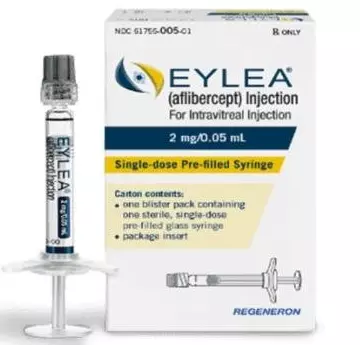Loss of vision can be caused by a number of factors, including glaucoma, cataracts, macular degeneration, and diabetic retinopathy. In fact, the Council for Disease Prevention released a report recently stating that half of Americans are expected to develop some form of blindness or visual impairment in their lifetime. This is why it’s so important to understand how Eylea can help prevent loss of vision. This drug has been FDA approved for many years now and has proven to be quite effective in helping reduce the risk of vision loss. Here’s everything you need to know about Eylea and how it can help prevent loss of vision.
What is Eylea?

Eylea is a drug used to prevent vision loss in patients with eye diseases such as macular degeneration and diabetic retinopathy. It is an injectable drug that is administered in a doctor’s office and works by slowing down the progression of these diseases. Eylea was first approved by the FDA in 2014 for the treatment of vision loss caused by macular degeneration. It is the first and only drug approved to treat this degenerative eye disease.
With countless studies showing how effective Eylea is at slowing down the progression of macular degeneration, it has also been approved to treat retinopathy of prematurity (ROP), diabetic retinopathy, and a condition called central serous retinopathy.
What are the Symptoms of Vision Loss?
- Diabetic retinopathy– This occurs when too much sugar circulates in the blood of a diabetic patient and causes damage to the retina. If left untreated, the disease can lead to blindness. Fortunately, the symptoms of diabetic retinopathy are easy to identify, which means it can be treated before it’s too late. Diabetic retinopathy causes blurry vision, swelling and bleeding in the eye, and a dark spot or spotty areas in the field of vision.
- Macular degeneration– This is the leading cause of blindness in people over the age of 60. It causes damage to the macula, which is the central part of the retina. The macula is responsible for helping you see fine details, like reading or recognizing faces. When this part of the retina starts to degenerate, you may experience symptoms such as blurry vision, poor night vision, distorted vision, and difficulty reading small print.
- Central serous retinopathy– This condition is caused by a blockage in a vein in the retina and is often found in people who work in professions that require long hours in front of the computer. Symptoms include blurred vision, blind spots, and sensitivity to light.
How does Eylea Help Prevent Vision Loss?
Eylea works by reducing the risk of fluid building up in the eye. This can be caused by blood vessels leaking fluid into the eye, which is common in people with macular degeneration, diabetic retinopathy, and central serous retinopathy. Eylea works by blocking the growth of new blood vessels and keeping existing ones from leaking fluid into the eye. The medication works by thinning the blood in the eye so it doesn’t pool together as much.
Blocking the growth of new blood vessels means less chance of fluid building up in the eye, which can lead to vision loss. The thinning of the blood means less pressure on the macula, which makes it less likely to degenerate.
The combination of the two can help greatly reduce the risk of vision loss in people with macular degeneration and diabetic retinopathy. Eylea is not without its risks, however. It is important to note that it can cause serious eye infections, bleeding, and swelling. It can also increase your risk of having blood clots, which is why it is recommended that you avoid travelling by plane if you are taking this drug.
Who Should Not Take Eylea to Prevent Loss of Vision?
As we’ve discussed, Eylea can come with a number of side effects, so it is only recommended for certain people. Eylea should not be taken by people who have an active herpes infection, are sensitive to it, or are allergic to any of the active ingredients. It should also not be taken by pregnant or breastfeeding women. Eylea should be taken with extreme caution in people with certain health conditions. People who have a history of blood clots, heart disease, or stroke should only take this drug with a doctor’s supervision. People with retinitis pigmentosa, macular dystrophy, diabetic retinopathy caused by traction, or ocular melanoma should avoid taking this drug.
As we’ve discussed, Eylea does come with some side effects. The most common side effects are eye pain, discomfort, redness, blurred vision, headaches, itching, swelling and bleeding in the eye, and infections in the eye. If you experience any of these, you should contact a doctor as soon as possible. There are a few other side effects to be aware of. These include gastrointestinal issues, allergic reactions, increased risk of blood clots, and increased risk of cataracts.
Some people may experience extreme side effects, such as difficulty breathing, allergic reactions that cause swelling in the mouth, face, or throat, rash, hives, dizziness, chest pain, fever, difficulty urinating, or trouble swallowing. If any of these side effects occur, the person should seek medical help immediately.
Final Words: How Eylea can Help Prevent Loss of Vision?
Eylea can be an incredibly effective medication for treating vision loss caused by macular degeneration, retinopathy of prematurity (ROP), diabetic retinopathy, and central serous retinopathy. It works by thinning the blood in the eye and blocking the growth of new blood vessels, which keeps fluid from building up in the eye. The only downside to this drug is that it comes with some serious side effects. This is why it is important to make sure you are aware of all the risks before taking Eylea to treat vision loss.
